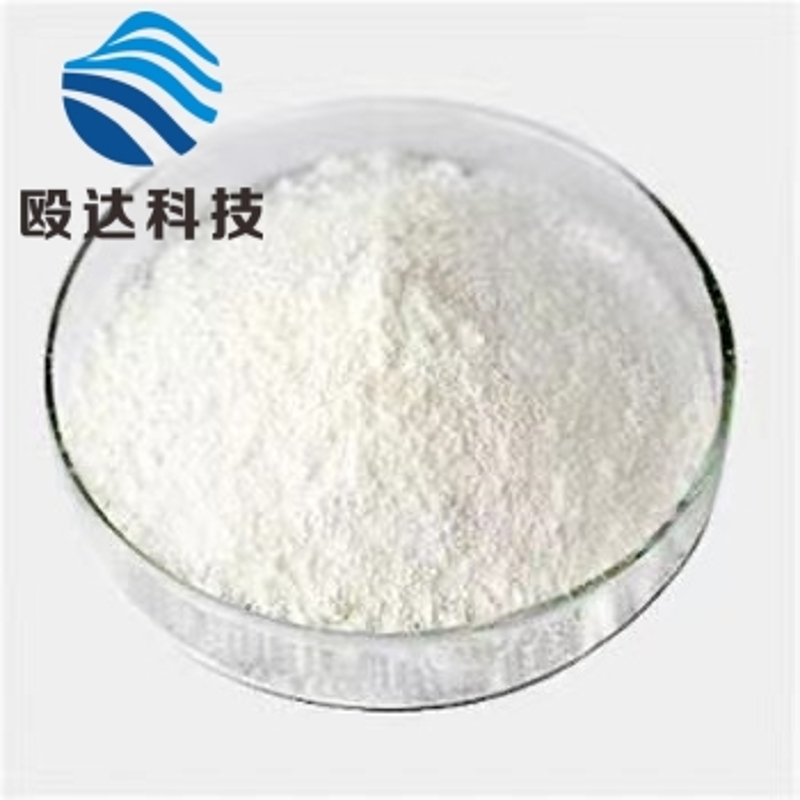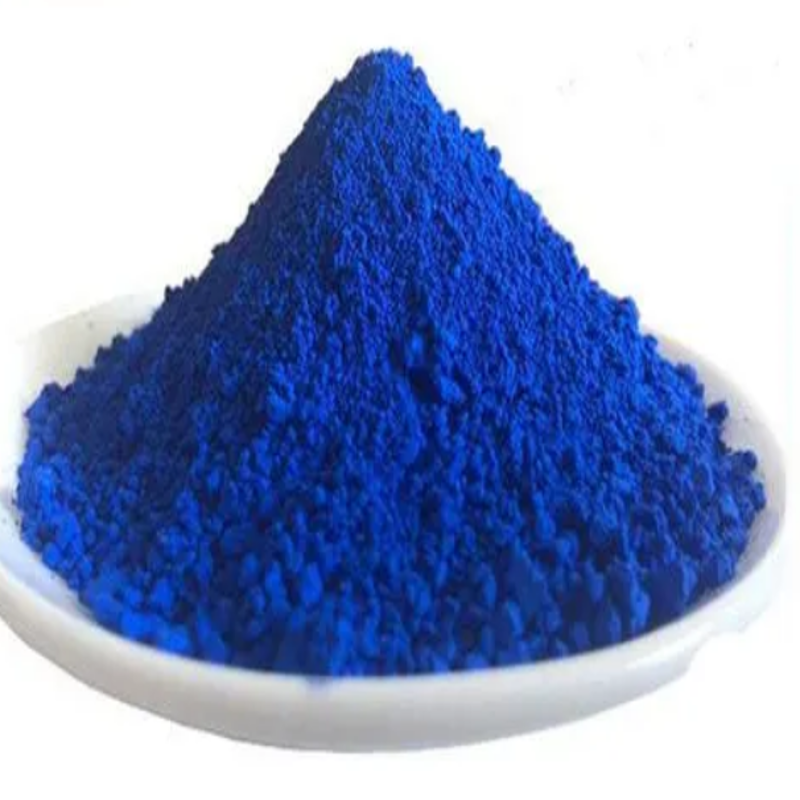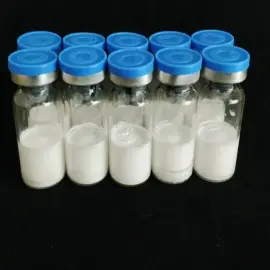-
Categories
-
Pharmaceutical Intermediates
-
Active Pharmaceutical Ingredients
-
Food Additives
- Industrial Coatings
- Agrochemicals
- Dyes and Pigments
- Surfactant
- Flavors and Fragrances
- Chemical Reagents
- Catalyst and Auxiliary
- Natural Products
- Inorganic Chemistry
-
Organic Chemistry
-
Biochemical Engineering
- Analytical Chemistry
-
Cosmetic Ingredient
- Water Treatment Chemical
-
Pharmaceutical Intermediates
Promotion
ECHEMI Mall
Wholesale
Weekly Price
Exhibition
News
-
Trade Service
With the rise in related morbidity and mortality worldwide, diabetes has been described by the World Health Organization as a major challenge
to global health.
to global health.
The number of people with diabetes worldwide is currently growing at an annual rate of 1.
6%, and their number is expected to grow from 537 million in 2021 to 783 million
in 2045.
This means that the number of diabetics worldwide has increased by 46%
in just over 20 years.
India is expected to see the world's highest growth of 151 million diabetics in absolute terms by 2045, while China's diabetes is also expected to reach 174.
4 million, and the continent's diabetes is expected to grow by 134%.
Overall, these increases will have a huge impact
on the global insulin supply chain and manufacturing.
4 million, and the continent's diabetes is expected to grow by 134%.
The United States, Europe, China and India have all adopted very different approaches to treatment of diabetes around the world, so insulin prices and reimbursement ranges vary
from region to region.
For example, in the U.
S.
and European markets, synthetic "modern" insulin accounts for 80 percent of all such products, while traditional human and animal insulin is still commonly used in
China and India.
This difference means that the price of insulin is higher in the United States, lower in India, and somewhere
between Europe and China.
Therefore, it is not surprising that insulin in the United States and Europe mainly comes from the three major production giants
.
In contrast, local insulin in China and India remains marketable, and price pressures in these regions mean that biosimilar insulin will gradually occupy an important place
.
The method of insulin injection also varies from place to place
.
Self-delivery devices such as pumps, pen syringes, auto-injectors or wearables allow patients to master a high degree of autonomy and independence
.
However, their use varies from place to place, with the penetration of these devices in Europe at nearly 100% but only 45%
in India.
To match this complex pattern of demand, pharmaceutical companies and their supply chain partners must control several tricky steps
throughout the pharmaceutical and equipment manufacturing process.
The creation of a seamless solution must take into account the choice of containers and delivery mechanisms, while also focusing on filling and assembly
.
Accurate inspections to ensure that medicines are intact and to minimize waste are equally critical
.
In this article, we will explore trends impacting insulin production and how pharmaceutical companies can address these issues
through optimized production environments and working with single-source suppliers that can facilitate end-to-end delivery methods.
01 Harnessing the power of innovation
01 Harnessing the power of innovation Price pressures will undoubtedly remain a key consideration in the coming years in terms of the various factors affecting the production of diabetes treatment options
.
This also applies to funding models in Europe, where the European government reimburses almost 100% of the disease and patients in India and China bear most of the medical costs
themselves.
Improving operational efficiency is critical to controlling production costs as it reduces downtime and downtime, maintains high yields for packaging filling operations, and highly accurate inspection processes that reduce false rejects and product waste
.
.
The Stevanato Group combines 70 years of glassware expertise to help pharmaceutical companies solve these challenges
with the power of innovation.
At the heart of its service is the critical need to produce robust containers that always comply with ISO dimensional standards and enable manufacturing tolerances to be controlled within a very specific range
.
The resulting product must not only be able to withstand high-speed filling without breaking, but must also be seamlessly compatible with assistive devices and ultimately provide accurate dosage
for patients.
with the power of innovation.
The Nexa® platform of the Stevanato Group is a product family
designed to meet these needs.
Nexa® EZ-fill® cartridges are mechanically stronger than standard glass containers and offer an excellent appearance
.
Nexa® EZ-fill® cartridges offer advantages in terms of quality and durability, so they can easily cope with the harsh processing conditions of high-volume, high-speed production lines, reducing the risk of
breakage during filling and assembly.
designed to meet these needs.
Consistency and precision in the cartridge forming process are the basis for
achieving these results.
For example, it is also critical to identify any defects at the glass edge at the bottom of the cartridge, as the integrity of the container may be compromised
when subjected to plunger insertion forces and/or assembled within the auxiliary unit.
Dosage accuracy also depends on containers with low dimensional variability and high-precision in-line camera inspection systems that minimize the possibility of dimensional or cosmetic defects during the molding process
.
Nexa® EZ-fill® cartridges are designed to maximize vessel performance in siliconization and seal container integrity
.
This innovative design is supported by our analytical services team, which works on each silicified formulation to ensure optimal performance when combined with the device, ensuring even distribution of silicones for optimal sliding and flat sliding properties, optimized appearance and seal vessel integrity
.
Dynamic changes between drugs, containers, and dosing devices are also a key consideration for syringes, which are often used in combination with auto-injectors to inject gluconsin-like peptide-1 (GLP-1)
into patients with type 2 diabetes.
One example is the syringes provided by the Nexa® platform of the Stevanato Group, which must meet the dimensional and performance characteristics
required for high-pressure equipment environments.
However, they must have high chemical compatibility and low physical vulnerability to sensitive biological agents
.
Nexa® syringes achieve this with ultra-low levels of tungsten, glue residues and high chemical compatibility of low silicon particles to minimize the risk of failure and container-drug interactions
.
Adherence to high-quality glass manufacturing standards, combined with rigorous inspection measures, means that patients get the right dosage every time, and pharmaceutical companies are also able to achieve benefits through operational efficiency and reduced product recalls
.
This quality control is critical to checking the integrity of containers before they enter the supply chain, as this affects potting operations and product inspections
in subsequent steps.
Stevanato Group's expertise in lighting tests is invaluable for insulin, which is highly cloudy and therefore often difficult to detect
.
We can overcome this challenge with a linear scanning camera after the filling process, continuously capturing progressive images that are stitched together to form a comprehensive image
based on 10,000 exposures.
The system is fast and accurate, with a particle detection rate of nearly 100% and a very low false rejection rate, as it can detect particles
adhering to fixed areas such as stoppers or glass surfaces of insulin cartridges.
At this stage, several different areas of the insulin container need to be carefully examined to detect if there are any potential problems: for example, performing particle detection, checking seal integrity and the presence of cosmetic defects
.
For example, bottlenecks are particularly prone to breakage, and some insulin products often have small air gaps at the top when filling, which makes the detection of this area more complex, so it is necessary to measure the filling level and detect potential cracks
separately.
.
The use of artificial intelligence (AI) technology is an emerging trend, and there is a growing emphasis on AI and is constantly being explored
.
It has the potential to be used in the future to improve and optimize inspection processes, helping to reduce false rejects and reduce total cost of ownership
.
The technology matches
the insulin container images in the test to the contents of a vast database containing similar images (both qualified and non-conforming).
The AI engine is able to quickly and accurately assess the likelihood of the container being accepted, while also being able to add more images to the database over time, thus continuing to accumulate its knowledge
.
02 Expanding the market for insulin products
02 Expanding the market for insulin products Another key challenge facing providers of diabetes treatment options is supply shortages, which is exacerbated by the expected increase in insulin demand in developing countries
.
This creates a situation in which local insulin manufacturers are expected to gain more market share than the three major manufacturing giants in the long run, and due to the lower prices of local companies' products, this will help to expand the sales volume
of their products in overseas markets.
.
In this case, a flexible "ready-to-use" container solution is an attractive option that provides an easy-to-use, cost-effective production path for businesses of all sizes
.
The EZ-fill® platform of the Stevanato Group integrates pre-sterilized vessels directly into the aseptic production line, regardless of batch size, ensuring product quality while also reducing total cost of ownership and time
to market.
03 Patient adherence to insulin regimens
03 Patient adherence to insulin regimens Even with an efficient production system that can meet the insulin needs of diabetics, there are still many challenges
.
For example, non-compliance with treatment options can pose serious health risks to patients, while also increasing the likelihood of comorbidities and hospitalizations – all of which create a huge cost burden and make patients and their families more anxious
.
In developed countries, there are two major factors that influence a patient's willingness to follow a treatment regimen: convenience and caution
.
Patients want the treatment process to be as simple as possible, especially if they have to inject in
public.
.
As the diabetes market evolves, in order to address patient compliance, the industry must place greater emphasis on the patient's own experience
.
Pharmaceutical companies are working to replace pen syringes with syringes based on the next-generation GLP-1 treatment regimen in order to provide a friendlier experience
for patients.
The innovations are mainly reflected in these devices, because they are easier to use and can provide accurate dosage, so they are more acceptable
to patients.
The ability to identify the correct containers at an early stage of the process and to quickly convert prototypes into products when developing new plant specifications are major factors
in shortening the overall project cycle.
At the Stevanato Group, our complete range of services includes analytical studies
that are critical to verifying performance and accelerating time to market.
These include analysis of container function, container design, device compatibility, sealed container integrity (CCI), and extractable and precipitable materials to ensure the safety and efficacy of the drug
.
While pharmaceutical companies will be involved in the design and development of the device, it is critical
to involve automation partners at an early stage, and the two need to perform the assembly design together.
This helps to quickly move the product from the pilot product line to the production stage
.
The Stevanato Group has a platform that facilitates technology transfer, helping to save time
from the prototype stage to the commercialization stage, from benchtop equipment to fully automated production lines for semi-automated assembly or mass production.
The Stevanato Group is able to support pharmaceutical companies that are looking for new equipment and developing related projects in-house
.
For more sophisticated equipment specifications, the assembly solutions of the Stevanato Group are uniquely positioned to offer pharmaceutical companies a full range of equipment services, a modular approach and customized equipment
based on proven technology.
This framework facilitates the production of precisely engineered components and devices that support patient compliance with treatment regimens and devices
with a good experience.
The production environment of the Stevanato Group, with its flexibility and ability to adapt to a wide range of specifications and extensive use of advanced high-precision automation, offers future-proof, scalable production lines running at speeds of up to 200 ppm
.
For example, its in-line control system checks the functional operation of each device, such as the initialization
of a pen syringe.
04 Growth in diagnostic tests
04 Growth in diagnostic tests These comprehensive manufacturing capabilities help deliver diabetes treatment options, which are also a cost-effective approach for pharmaceutical partners of all sizes and are able to provide a well-experienced mode
of administration for the growing number of diabetics worldwide.
These criteria are also one of the guiding forces in our diagnostic work, with a growing focus on patients' self-assessment of blood glucose levels in health management and their interactions
with healthcare professionals (HCPs).
We're seeing a real trend in the industry where people want devices to have some level of connectivity to support patients in self-assessment and to share information
with healthcare practitioners in a low-touch way.
It is therefore crucial for pharmaceutical companies to work with innovative partners such as the Stevanato Group, who not only understand the technology, but also provide effective project management to support the industrialization of connected equipment and the cost-effective production
.
The Stevanato Group also focuses on the development and manufacture of custom diagnostic and laboratory consumables as well as medical consumables
.
The industry-specific industrial development and production environment is an important guarantee
for achieving consistent quality.
The company's customer-specific consumables meet the highest standards
in terms of accuracy, surface quality, raw material purity and cleanliness of the production environment.
It offers 24/7 controlled regional production and cleanroom operations
according to internationally recognized standards, including ISO 7 and ISO 8 categories.
05 Comprehensive solutions for diabetes treatment
05 Comprehensive solutions for diabetes treatment For diseases such as diabetes, where the industry has many complex challenges to overcome in producing cost-effective, patient-friendly treatment options, the Stevanato Group offers a wide range of services that create value
for pharmaceutical partners by accelerating time to market, reducing supply chain issues and risks, and streamlining project management.
The extensive development and engineering experience of an integrated supplier also provides partners with consistent support and expertise in product innovation and problem solving
.
The latest example of innovation from the Stevanato Group is Alina®, a project
to improve the ease of insulin and GLP-1 injections.
This disposable pen syringe platform for variable and multi-dose treatment is beautifully designed and functional, with easy callback, optimized injection force for improved patient comfort, and a readable display
.
The pen platform also offers a range of customizable options that enable pharmaceutical companies to choose dosage, color, and more industrial designs
based on their needs.
With world-leading manufacturing capabilities, a large global footprint and more than 70 years of industry experience, the Stivanato Group is the smart choice
for pharmaceutical companies in customizing drug delivery systems and packaging solutions.
For pharmaceutical customers, working closely with a full-service provider helps streamline their business journey, from container selection to drug delivery device manufacturing, which is one of
the key steps in solving the diabetes challenges facing a global population in the 21st century.
Resources:
Resources: 1.
Report of the World Health Organization's Global Diabetes Summit (
Report of the World Health Organization's Global Diabetes Summit ( 2.
IQVIA(MIDAS 2020) 2.
IQVIA(MIDAS 2020)
3 "A Study of Compliance with and Medication Adherence to Insulin Medication in People with Type I and Type II Diabetes," a 2018 study
of 101 patients conducted by the Department of Basaveshwara Medical College in India.
of 101 patients conducted by the Department of Basaveshwara Medical College in India.







